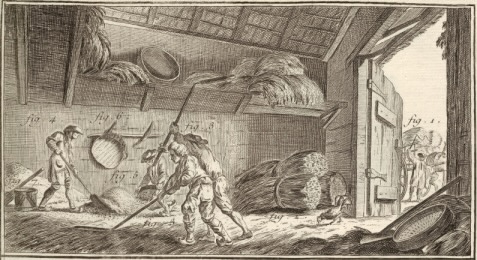
John D. Norton
Department of History and Philosophy of Science
University of Pittsburgh
https://sites.pitt.edu/~jdnorton/jdnorton.html
March 4, 11, 2025
Much of this article is based on my longer "The Rise and Fall of Karl Popper's Anti-inductivism." Download
The literature on falsifiability and pseudo-science is massive. A more expansive review of the demarcation problem is provided by Hansson, Sven Ove, "Science and PseudoScience", The Stanford Encyclopedia of Philosophy (Fall 2021 Edition), Edward N. Zalta (ed.), https://plato.stanford.edu/archives/fall2021/entries/pseudo-science/; and also by Dániel Bárdos and Adam Tamas Tuboly, Science, Pseudoscience and the Demarcation Problem in Cambridge Elements in the Philosophy of Science. Cambridge University Press, 2025.
Falsifiability fails now, has always failed and will always fail to demarcate science from pseudoscience. This is so for one simple, enduring and irreparable reason: it is the wrong criterion.
Science is inductive. What distinguishes good science from bad, strong science from weak science, secure results from flights of fancy is its inductive strength of empirical support. That is the alpha and the omega of good science.
Relations of inductive support come in a great variety, both of strengths and types. Sometimes it is quantitative and captured by a numerical probability. More often it is qualitative, but none the worse for it. The conservation of energy is very strongly supported inductively by a great mass of evidence, even if it is futile to try to put a probability measure on the strength of support. However we conceive them, relations of evidential support are rich and complicated and present a formidable challenge to philosophers of science like me who work on theories of inductive inference.

Threshers separating the wheat from the chaff. Plate from Denis Diderot,
Jean le Rond d"Alembert, eds. Encyclopédie, ou dictionnaire raisonné des sciences,
des arts et des métiers Vol. 18.
The criterion of falsifiability seeks an easy answer. These many inductive complications are to be replaced by the single, easily discernible and supposedly simple criterion of falsifiability. We can use it to sort proposals quickly into the good and the bad, the worthy and the unworthy, the falsifiable science and the unfalsifiable pseudoscience. We become threshers who separate the prized, scientific wheat from the unwanted, pseudoscientific chaff. It is beyond optimistic to hope that matters could end well if we capitulate to such a simple criterion. It never was going to work and it never will.
In the sections below, we shall see that the difficulties of falsifiability stem from this one, fatal problem.
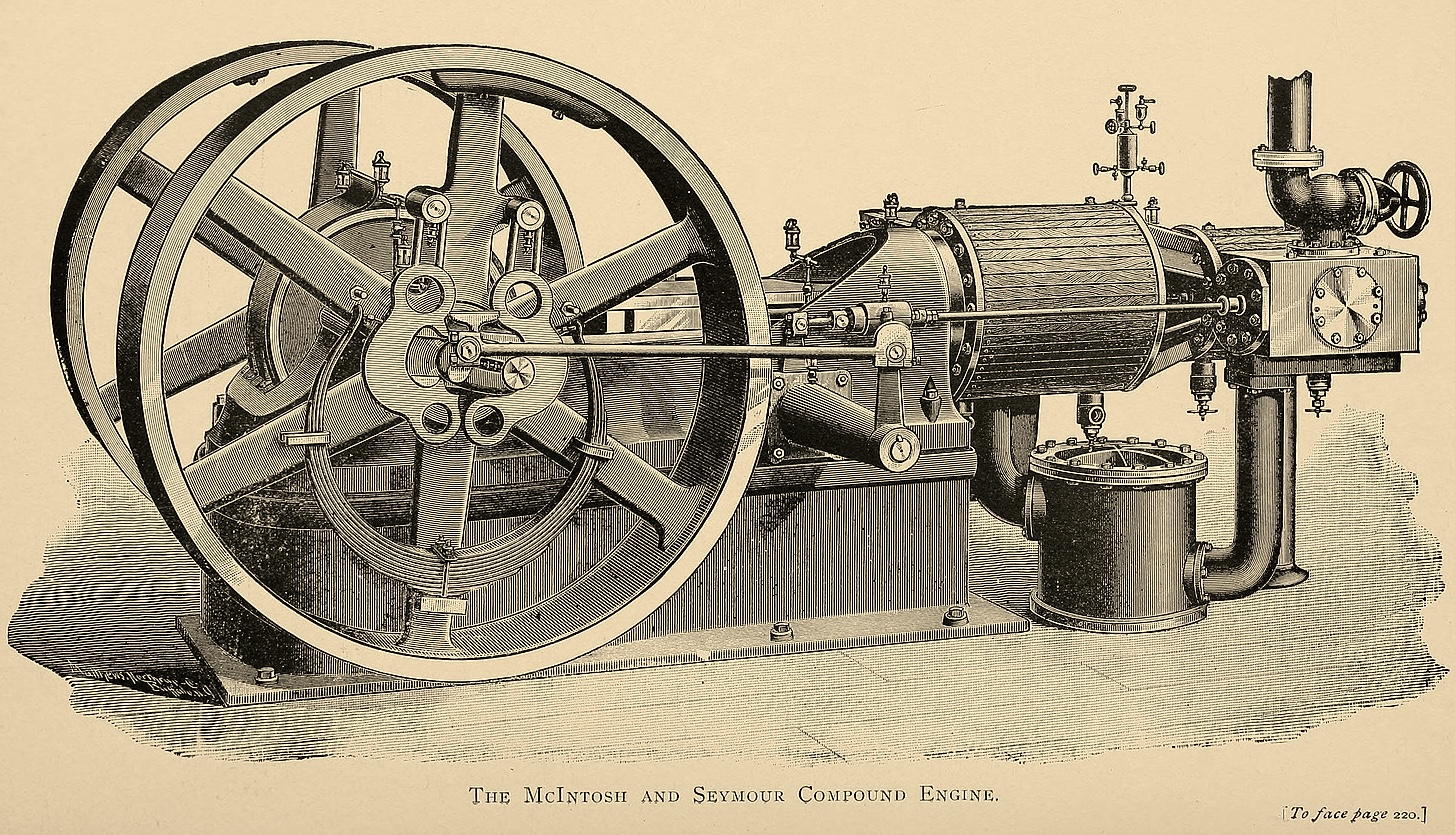
Public domain, https://commons.wikimedia.org/wiki/
File:Stationary_steam_engines,_simple_and_compound;
_especially_as_adapted_to_light_and_power_plants
_(1902)_(14797366203).jpg
Proposals that seek scientific status vary greatly in the strength of evidential support they enjoy.
At the most secure end of the gradation are the well-established theories of present science. The law of conservation of energy assures the failure of all perpetual motion machines. The periodic table of the elements underwrites all our efforts in chemistry. That living systems are dependent on DNA for their reproduction remains central to modern biology.
More speculative sciences can enjoy considerable support, but not in all their parts. Modern quantum theory, for example, has been massively successful, yet the nature of quantum measurement remains unresolved. Cosmology has been remarkably successful. Yet 95% of the cosmic matter resides in a "dark" form: dark matter or dark energy, whose natures remain unclear.
New theories commonly arise as fertile but poorly supported conjectures. This was the status of atomic theories until they found support in both their chemical and physical varieties in the nineteenth and early twentieth centuries. Until then, atomic theories were merely pleasant, plausible speculation without any significant evidential support.
At the opposite extreme are theories refuted by the evidence. The obvious examples are the physical theories of antiquity. These refuted theories include a chemistry based on earth, air, fire and water as elements; and a physical astronomy based on an earth located at rest at the center of a spherical cosmos.
Proposals for science range across this gradation. They migrate according to how new evidence speaks for and against them. There is no simple test that locates the place of each proposal. A proper assessment requires a deep knowledge of each field. Even then the assessments can be equivocal. One person's promising new avenue may be another's futile digression. Such was the case with continental drift when the hypothesis was pressed forward in the early 20th century. Evaluations of new proposals like these might be fiercely debated by experts. It is properly so, if science is to maintain its critical standards.
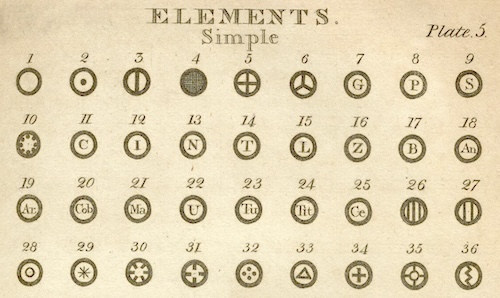
John Dalton's original presentation of his atomic elements.
In an environment this complicated, no simple criterion can provide a serviceable, sharp discrimination between worthy science and unworthy proposals. It is a matter of great delicacy to decide whether some new proposal offers an inspired insight into new realms of science; or if it is merely a mischievous fantasy. For most of the theory's life, proponents of atomism had to assure us that atoms exist even though they were posited to be far too small for us to discern. That made the theory unfalsifiable. The weakness was properly a concern. But it would have been ham-fisted to categorize it as a pseudoscience along with the invisible, all-pervading spirits of nineteenth-century spiritualism.
If we persist with as simple a criterion as falsifiability, we likely produce sharp but spurious divisions that connect poorly with the promise of new proposals and the all-important question of the strength of evidential support.
The danger with an excessively simplified criterion is that it will misclassify things. Exactly that happens routinely with falsifiability. Since falsifiability is just too easy to secure, it readily classifies meritless proposals as passing the test of being scientific.
Here are a few cases.
Perhaps the most tiresome example of proposals, ill-fated from the outset, are those that advocate for a flat earth. These proposals saw a revival in the 19th century. Two works--Rowbotham's and Gleason's--attracted considerable attention and found some following. They depicted the earth as a flat disc with the North Pole at its center. There is no South Pole. Instead, the rim of the disc is a wall of ice that precludes our access to the rim in what we otherwise know as Antarctica. Here is a map of Gleason's version:
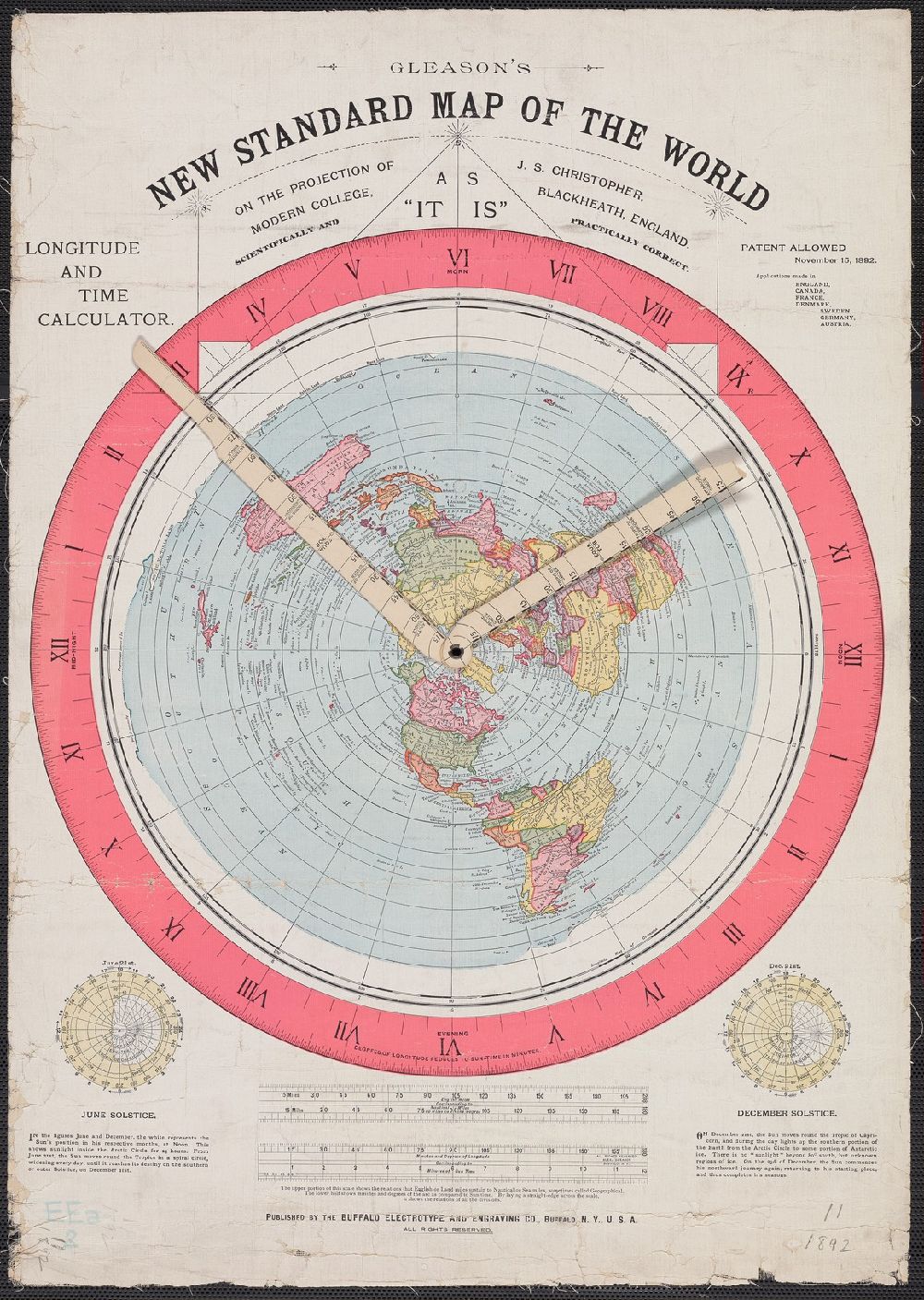
Even in the 19th century, in the light of centuries of work in geodesy and astronomy, the proposal was preposterous. However, the proposal was quite falsifiable. One route to falsification is evident in the map. Distances between two fixed longitudes along a parallel of latitude must increase beyond their values at the equator when the parallels of latitude south of the equator are considered. The distances between the southern tips of Africa and South America must be far greater than the distance afforded by a (near) spherical earth.
The flat earth proposal is, therefore, readily falsifiable by distances encountered in the south by sailors. Rowbotham (p.22-23) and Gleason (Ch. XIX) took up the challenge. They recruited sailors to report their difficulties navigating in the far southern oceans. Rowbotham and Gleason rather gleefully used the navigational woes in these reports to challenge the spherical geometry of the earth's surface.
The nineteenth=century flat earth theory was quite falsifiable. Are we now to credit it as science, albeit falsified science? That would give it a status comparable to Newton's physics. The difference is clear. Newton's falsified physics was proposed in full accord and with full support of the available evidence. The nineteenth century flat earth theory was proposed in stark contradiction with the long-established evidence. It was then mischievous, crank science that deserved no scientific credit.

From Agricola, De Re Metallica.Trans H.C. and L.C. Hoover.
London: the Mining Company, 1912 p. 40.
Another, similar case is dowsing. In its twentieth-century incarnation, it proposed that dowsers, wielding sticks, could detect underground water merely by passing over it above the ground. The proposal was, by the twentieth century, quite at variance both with experience and established science. The understanding of electric, magnetic and gravitational interactions was sufficiently advanced to preclude any possible physical mechanism for dowsing. An exasperated 1917 report by the US Geological Survey responded to many inquiries and warned that dowsing was quite discredited.
Proponents of dowsing were undeterred. They produced a desperate evasion. Physicist and psychic researcher William Barrett proposed, in a 1911 work, that dowsing works because dowsers possess the psychic "faculty of clairvoyance."
Despite such evasions, dowsing remained falsifiable by practical field tests. It predicted that such and such probing near underground water would produce such and such an effect. The prediction was precise enough that the German government ministry, Bundesministerium für Forschung und Technologie, was induced to fund a huge test of 500 dowsers in 1986 in the so-called "Scheunen [barn] experiment." As one might expect, whether the results favored dowsing became a subject of fierce debate.
Dowsing is falsifiable and has been falsified repeatedly up to stringent inductive standards. Clearly, that fact falls far short of what is needed to accord dowsing scientific credibility. It is quite at variance with the sciences governing material interactions. Experimental tests of it produce repeated failures, even while proponents of dowsing routinely find excuses to challenge the failures. There is something deeply flawed in dowsing as a scientific proposal. That failure is invisible to an oversimplified criterion that merely asks if the proposal issues in testable predictions.
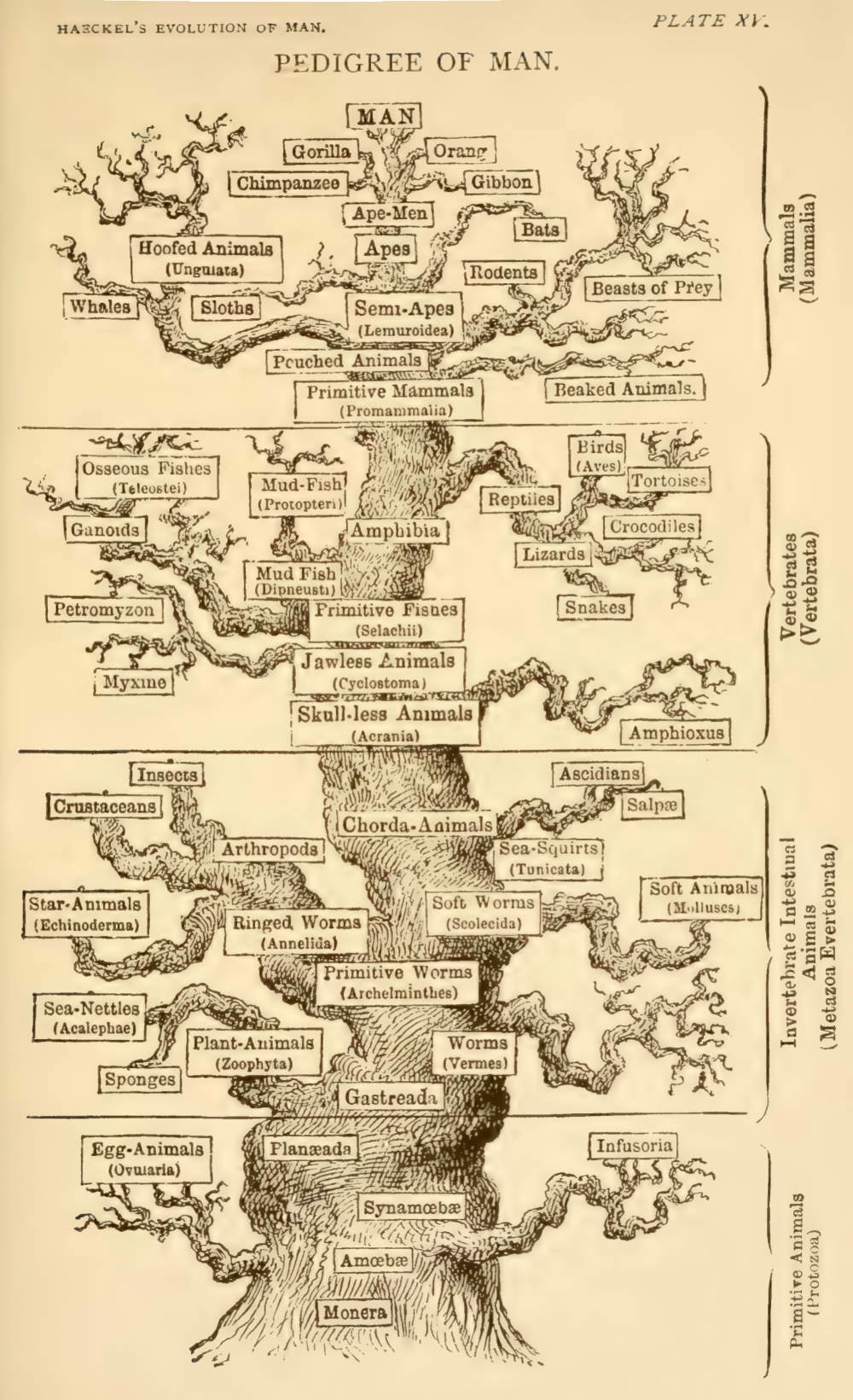
From Ernst Haeckel, The Evolution of Man. New York: Appleton, 1897. Between pp. 188, 189.
A more prominent example arises through the enduring challenges to evolutionary theory in biology from proposals of theologically inspired notions like special creation and intelligent design. Because of the seriousness of the threat to established biology, these claims have been resisted, prominently. In a 1999 appraisal of creationist ideas, the National Academy of Sciences announced that creation science "cannot be meaningfully tested" and ended up concluding that "creation science is in fact not science." (pp. 1-2 )
Accusations of failure of testability are far too tempting for their targets. The requirement of testability is just too malleable and easily secured. The creationists were quick to point out scenarios that, they believe, would falsify their design arguments. They proposed: "Describe a realistic, continuously functional Darwinian pathway from [a] simple ancestor to [the] present [irreducibly complex, rotating] motor [of bacterial flagella]."
The National Academy of Science took up the challenge and, in 2008, described just such a pathway that would produce the supposedly irreducibly complexity of the eye and of flagella in bacteria. (Ch. 3 Creationist Perspective.) Whereas their response is quite effective, it amounts to a recognition that creation science is falsifiable after all. They were falsifying it.
There is a pattern in these three examples. Falsifiability fails to discriminate proposals that we find defective as science. These defective proposals pass the test. Where they do fail is that a careful analysis of the pertinent evidence shows them to be bereft of any significant inductive support. That is where their defect lies.
Time and again, the cases that we would like to dismiss as unfalsifiable, if the criterion were effective, prove to be falsifiable after all. One of Karl Popper's motivating examples of an unfalsifiable proposal is given in his autobiographical "Conjectures and Refutations." It is Freud's psychoanalysis. In an exhaustive study, Adolf Grünbaum argues that Freud's theories are quite testable after all; and that they have been tested and have failed.
An excessively simplified criterion such as falsification can also mischaracterize proposals in the opposite sense. That is, it can classify as unscientific proposals that we would otherwise judge to be quite admissible as responsible science. It may turn out that these proposals were speculative and eventually fail to secure strong evidential support. However, we do not feel that there was something methodologically defective in the original proposal.

Perseus Galaxy Cluster
https://science.nasa.gov/universe/galaxies/large-scale-structures/
Modern cosmology is founded on the supposition that is sometimes called the "cosmological principle." It says that the universe is, at each moment of cosmic time, roughly uniform, if judged on a sufficiently large scale. This supposition is essential in deriving the Friedman-Lemaitre-Robertson-Walker spacetimes that form the basis of modern cosmology.
The difficulty is that the principle is unfalsifiable if our space is infinite, which remains one possibility. For the universe is not uniform locally. We must consider larger and larger volumes of space to smooth out local irregularities. The universe is proving resistant to the principle. Even on the largest scales we can probe, local irregularities persist. The principle can be sustained, however, indefinitely. We merely need to insist that we proceed to larger and larger volumes. If we take that possibility seriously, even if it requires us to probe beyond what is observable, we have rendered the principle unfalsifiable.
Public domain https://commons.wikimedia.org/wiki/File:Periodic_table.svg
This last example is well known. However, we can find many others, if we are willing to explore more obscure corners of our sciences. Nitrogen and Oxygen are adjacent in the periodic table of the chemical elements. Might there be an as yet undiscovered chemical element that should be placed between them? To be absolutely certain that no such as-yet-undiscovered element exists, we would need to search everywhere and for all time. The existence of such an element is unfalsifiable.
The very idea of such an element is not preposterous scientifically and should not be dismissed along with flat earths and mysterious spirits of 19th-century seances. Rather, as discoveries in atomic physics and quantum theory made clear in the early 20th century, the codification of elements in the periodic table provided an exhaustive inventory of which elements are possible. These theories precluded a new element between Nitrogen and Oxygen. It is precluded by our evidence under the standards of an inductive logic, but remains a logical possibility if inerrant, deductive falsification is demanded.
These last examples of misclassification by falsificationism are instructive but essentially benign. Neither cosmology nor chemistry has been harmed by it. That is not the case elsewhere. At greatest risk are the historical sciences. They are sciences whose evidential foundation lies in the traces of past occurrences. Their methodology is not predictive. Is inductive. What, it is asked, can we infer inductively from these historical traces?
We need not try to guess how an historical science might be harmed if it took too seriously the idea that true science must be distinguished by its making of falsifiable predictions. We have a real case in evolutionary biology.
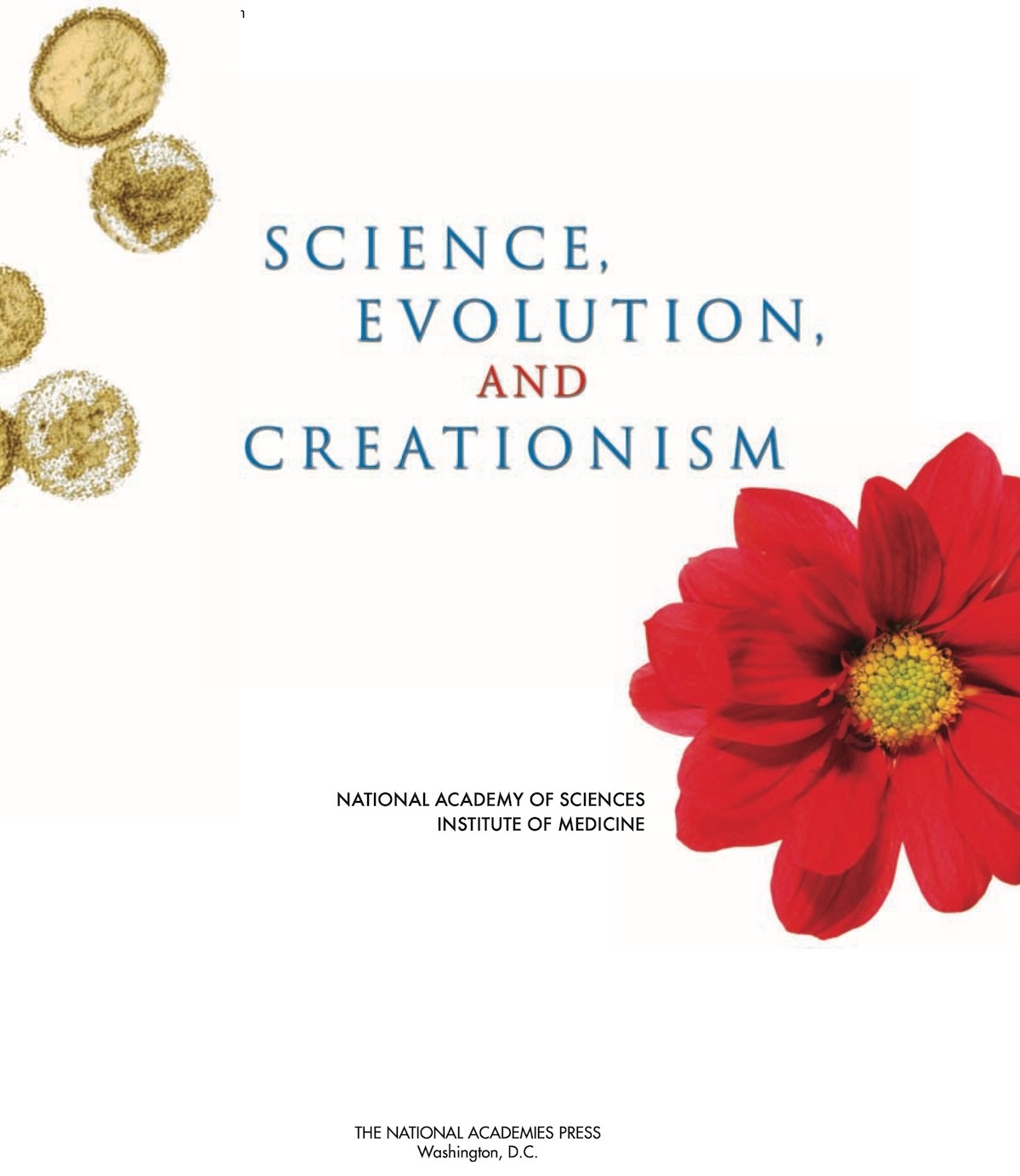
In response to the continuing, organized assaults by creationists on evolution theory, the scientific community has sought to set the record straight. Why is evolutionary theory properly a science? The 2008 response, Science, Evolution, and Creationism, by the National Academy of Sciences sought to set the record straight. It provided an admirable inventory of the masses of evidence favoring evolutionary theory. The compilation includes fossil evidence, the geographic distribution of species, comparison of DNA sequences and makes connections, on its own account, with "anthropology, astrophysics, chemistry, geology, physics, mathematics, and other scientific disciplines, including the behavioral and social sciences." (p. 17)
The most important components of this compilation of evidence are historical. Fossils, dated through the rock strata in which they appear, allow biologists to assemble an evolutionary chronology of evolving species. This is not a predictive activity. It is inductive. The evidence is collected and biologists find what it supports.
What compromises an otherwise outstanding presentation is its capitulation to falsificationist thinking. On p.10 of its recapitulation of the evidence for evolution, the document makes a startling assertion.
Any scientific explanation has to be testable — there must be possible observational consequences that could support the idea but also ones that could refute it. Unless a proposed explanation is framed in a way that some observational evidence could potentially count against it, that explanation cannot be subjected to scientific testing.
This is followed by text in larger white, san serif type, boxed on a blue ground with a gold border. This statement is clearly controlling and important. It says:
Definition of Science
The use of evidence to construct testable explanations
and predictions of natural phenomena, as well as the
knowledge generated through this process.
This capitulation to falsificationism explains the otherwise great prominence given in earlier pages to the discovery of the fossil Tiktaalik. Were it not that it could be offered as a "confirming prediction of evolutionary theory" (p.3), it would merely count as a worth fossil find, but not otherwise merit such prominent display.
We can understand what tempted the Academy to make this blanket assertion that so contradicts the most important evidential methodology of evolutionary theory. Their target is supernatural forces such as are promoted by creationists. They are to be impugned as unfalsifiable.
The result is unfortunate and unnecessary. The Academy could have sought to impugn supernatural forces by applying its own standards: it should demand the evidence for their action in evolutionary processes.
The criterion of falsifiability is tempting. It gives us the hope that our academic opponent can be vanquished with a short riposte. We can dispense with the tedium of the assessment of evidence.
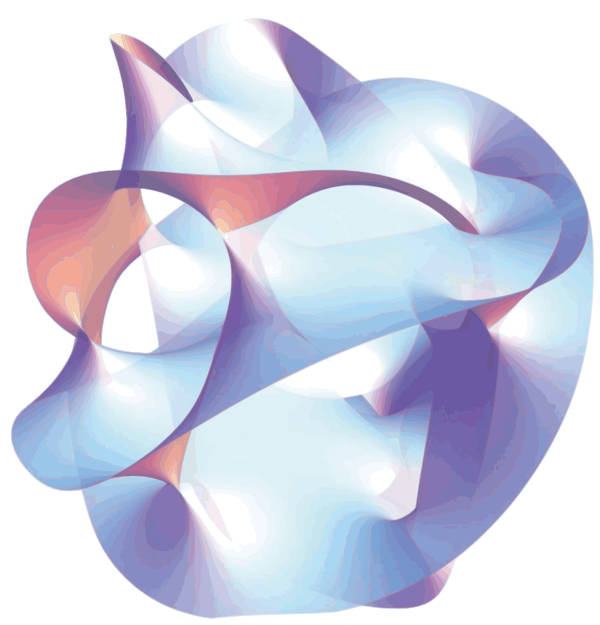
Reduced dimensional representation of the Calabi-Yau manifold,
which is the geometric structure of the six compactified dimensions
of spacetime in string theory.Public domain.
https://commons.wikimedia.org/wiki/File:Calabi_yau_formatted.svg
String theory provides a modern example. It is a fundamental theory of particle physics that is struggling to gain broad acceptance, beyond its own committed proponents. The difficulty is that it differs from existing theories only in regimes of extremely high energy, where tests, acceptable to string theorists are not feasible and may never be.
Critics of string theory are quick to point out its many problems. To them, they report denials by string theorists to accept repeated falsifications of their theory. This resistance has made the theory unfalsifiable.
For example, it was found quite early in the development of string theory that it needed a spacetime of ten dimensions. Our spacetime has three dimensions of space and one of time. String theory predicts six too many dimensions to accord with experience.
String theorists refused to accept that this was a refutation of their theory. Instead, they embraced the six extra dimensions as a part of the theory. Its exploration provided a rich "string theory landscape" in which to hunt for particles. (The figure above is a representation of the landscape in a Calabi-Yau manifold.) For critics, it was an early instance of the many refutations suffered by string theory.
Is string theory falsifiable or not? Clearly, there is no community-wide agreement. What is one theorist's falsification is another's opportunity. To demonstrate its unfalsifiability would certainly be a significant blow to string theory. However, critics of string theory should not ground their case in unfalsifiability. If the history above shows anything, accusations of falsifiability can go badly awry. Dubious proposals can easily deflect them; or they may just impugn work that is otherwise untroubling.
The effect, once again, has been to misdirect and even corrupt a debate that needs to happen. It will not be resolved by squabbles over falsifiability. The only consideration that really matters is this: what is the evidence for string theory?
The criterion of falsifiability fails in its standard application as a means of demarcating science from pseudoscience. However, the criterion has diagnostic value. Whereas unfalsifiability is not an automatic disqualification from science, it can indicate that there are underlying evidential problems. They come in two forms.

Gustav Dore, Creation of Light
First, the proposal may be such that it is so disconnected from experience that no evidence can touch it. In this category, we might think of highly speculative cosmologies which propose alternative universes, parallel to our own, but never actually impinging on us. Another version might posit the existence of an earlier universe prior to the big bang singularity in our past or succeeding a big crunch singularity in our future. In so far as these are true singularities, nothing can be transmitted between the eras before and after each singularity. It is futile to expect that we can recover any observational evidence from these eras.
Their lack of falsifiability alerts us that these proposals are bereft of empirical evidence. Neither of these proposals should be considered responsible, empirical science. But then it also seems uncharitable to group them with crank fantasies about how the aliens built the pyramids. Perhaps we can find a category somewhere in between. Perhaps they are scientific speculations worth preserving in case there is a future utility in them?
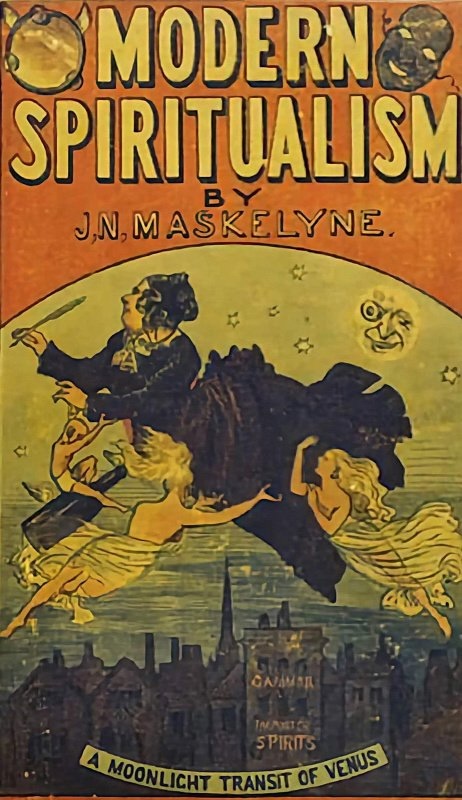
1st edition 1876,
The second way that failure of falsification is a symptom of a deeper problem arises when the proposal has been falsified, but its proponents offer artful evasions to escape the falsification. We saw above that dowsers in the early 20th century proposed that dowsing operated psychically to evade the problem that no known physical interaction could mediate it. Critics of string theory similarly accuse string theorists of subverting refutation as discovery. There is no evidence that these six extra dimensions of space exist, the critics say. No--there are there, the string theorists respond. The dimensions are just "compactified," that is, they are rolled up in tight loops, such that they become invisible to ordinary experience.
Both of these are failings that should concern us. The failure is not merely that the proposals are unfalsifiable. The failure lies in the deeper problem for which unfalsifiability is a clue. The proposals are poorly related to empirical evidence, either because of their very formulations or because of artful evasions by their proponents.
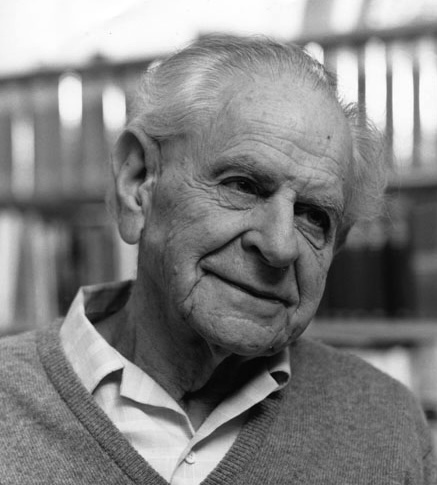
https://commons.wikimedia.org/wiki/File:Karl_Popper2.jpg
"no known copyright restrictions exist"
The origin of modern falsificationist thinking lies in the works of Karl Popper, especially his 1935 Logik der Forschung, which was translated as his 1959, Logic of Scientific Discovery. Its prominence derives from its compelling prose and Popper's success in propagating its ideas.
Present falsificationist thinking is closely allied with Popper's particular formulation. This closeness explains a curious anomaly. Why is falsificationism offered as an alternative to inductive methodology? Why are they not used in tandem? The diagnostic value of falsificationism suggests that such a tandem usage would be productive.
That falsificationism is so opposed to inductivism is an artifact of a brief, but fertile period in the development of philosophy. Karl Popper developed the foundations of his philosophy of science in the 1920s and early 1930s in Vienna. This was a period of extraordinary intellectual growth. The philosophers of the Vienna Circle were, at the same time, formulating their version of logical positivism, which would come to exercise a controlling influence on later developments in philosophy. It was a time of great intellectual adventurism. New thoughts were encouraged and prized. The most extraordinary ideas could now be entertained and elaborated.
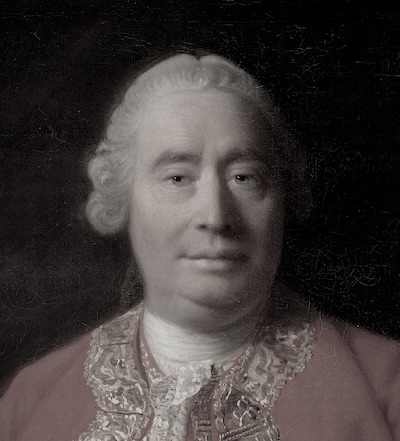
David Hume
The philosophers of this period--notably Bertrand Russell and Hans Reichenbach--had revived Hume's now celebrated problem of induction. According to it, justifications of inductive inference were necessarily circular and inadmissible. Science may use inductive inference. However, Hume's problem asserted that they did so without any good reason. It was an alarming result. Russell and Reichenbach each sought to retain the viability of inductive inference through proposals that, in retrospect, are not fully satisfactory.
Popper's reaction was different. He was braver and more principled. If there was no sound foundation for inductive inference, then inductive inference itself could not provide a sound foundation for science. We had to find that foundation elsewhere.
Popper's adventurous proposal was that the mechanical tedium of a slow inductive ascent was to be replaced by a cycle of conjectures and refutations. A scientist would enter the cycle with a conjecture that would issue in a testable prediction. If the prediction was falsified, the scientist would move on to a new conjecture. If the prediction survived empirical test, it was not confirmed, since that is an inductive notion. It was "corroborated," which meant, for Popper, nothing more than it had passed the predictive test.
This cycle of conjecture refutation was, for Popper, the evidential engine of science. It did not supplement the old inductive methodologies. It replaced them. In an era in which the new, the bold and the extraordinary were prized, it was a proposal that deserved serious attention.
Once Popper had committed to his account, the rest followed. There was no prospect for an accommodation with inductive inference. Its rejection has been the motivation for his proposal. Falsifiability became crucial. For in the cycle of conjectures and refutations, this was the one step in which the empirical world entered. If a proposal was falsifiable, the cycle could continue. If it was not falsifiable, the cycle stalled, for no testable prediction could be made.
In Popper's account of scientific method, falsifiability was everything. A proposal that lacked it could not be subjected to scientific scrutiny by the method. It could never earn proper scientific credentials. It could not count as science. Such is the danger of oversimplification. Popper's oversimplified caricature of scientific method gave us a correspondingly oversimplified criterion for what counts as a legitimate science.
We can admire Popper for taking a principled stand. If induction is unsupportable, then we should not use it. It was principled, but imprudent. The centrality of inductive inference in scientific practice was then and is now undeniable. It could not be discarded so easily. Thus, Russell and Reichenbach tried to preserve it, even if their efforts fell short.
Scientists could well be excused for ignoring these inductive difficulties. If philosophers could find no sound foundation for induction, then it was a problem for philosophers to solve. There was no problem apparent to the scientists. Their inductively grounded project was thriving. That the philosophers could not understand how this was possible was their problem and their failing. Perhaps they should keep their failure to themselves and not try to impose it on an otherwise thriving science?
In retrospect, it is clear, at least to me, that Popper's clever proposal was never viable. It sought to replace the rich and complex evidential maneuvres of inductive inference with an oversimplified picture that might fit only a narrow sliver of actual scientific practice.
We should admire Popper's inventiveness and principle in devising his adventurous account of scientific methodology. We should lament that it escaped the raging ferment of ideas of 1930s Vienna and was not later tamed by the rigorous criticism that such a bold proposal needs.
The difficulties for falsificationism sketched above are only a small part of an extensive literature on falsificationism. In this section, I report difficulties raised for Popper's views from the opposing logical positivists and logical empiricists. They were his peers in the philosophy of science and sought to defend inductive notions.
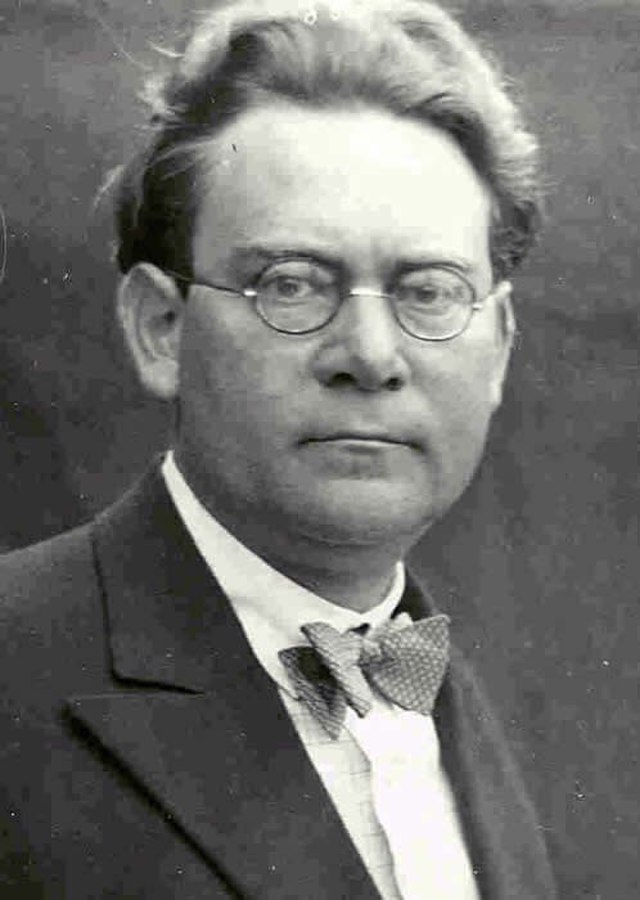
https://commons.wikimedia.org/wiki/File:H_Reichenbach.jpg
24 September 1921, public domain
Hans Reichenbach argued that Popper's account could not escape inductive notions. Refutation requires an assurance of the truth of the empirical evidence used in the refutation. Yet no empirical result that could serve that purpose could ever be know inerrantly. An inductive risk had to be taken in accepting the empirical result. Similarly, a scientist must choose a new conjecture from a huge array of possibilities. The scientist will favor the more promising conjectures. Discerning which are more promising is an inductive judgment.
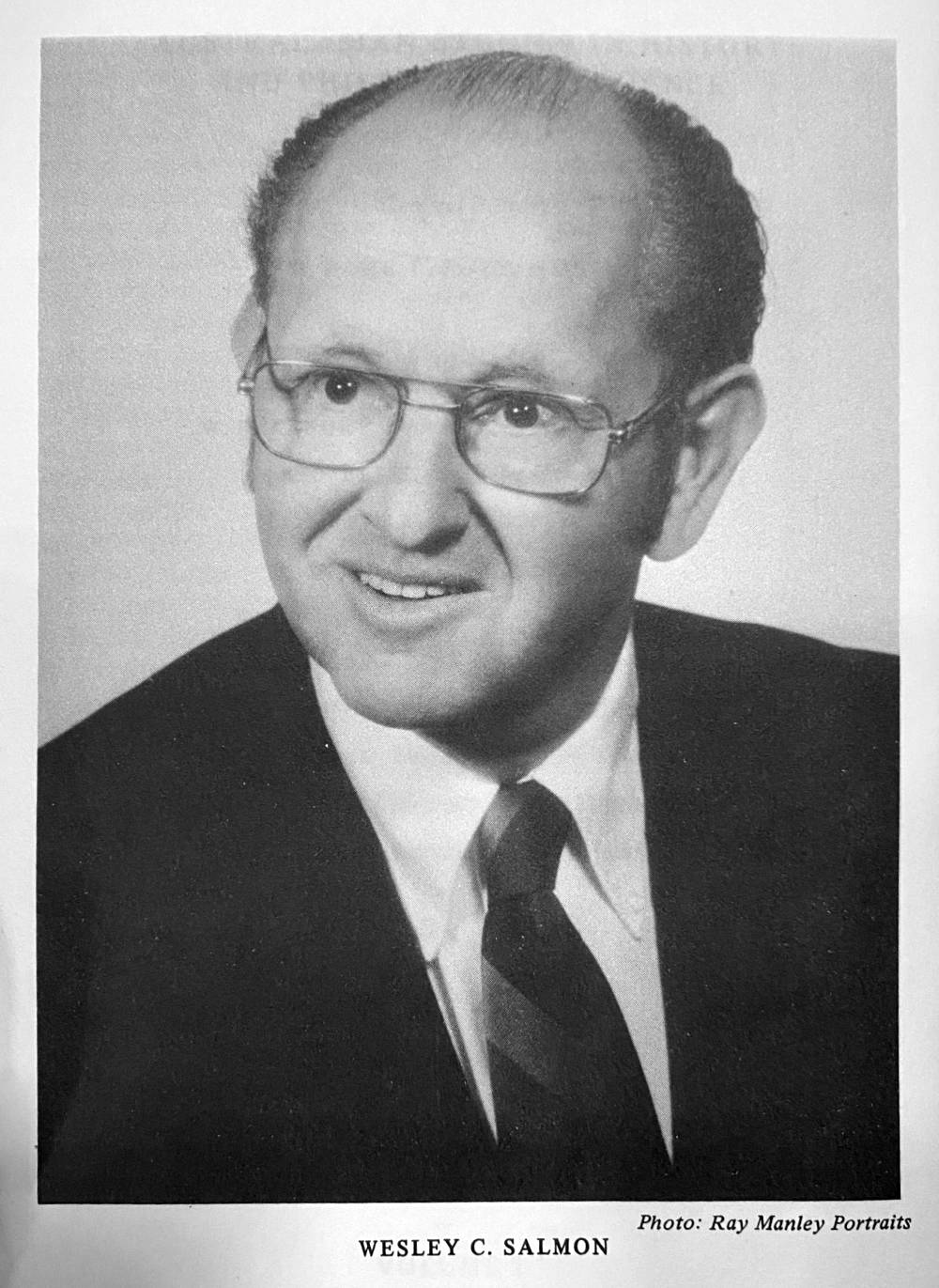
Frontis piece portrait in Robert McLaughlin, ed., What? Where? When? Why?
Essays on Induction, Space and Time, Explanation.
Dordrecht, Holland: D. Reidel Publishing, 1978.
Hans Reichenbach's celebrated student, Wesley Salmon, argued that corroboration is a poor surrogate for confirmation. We value inductively well-confirmed science since the confirmation provides an assurance that the science will continue to hold in the future. Predictions can be made rationally with it. Corroboration gives us no such assurance about the future. It tells us only of past events. It can give no rational support to predictions.
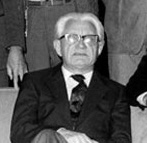
Excepted from a 1970's faculty photograph
of Philosophy and HPS faculty at the University
of Pittsburgh.
https://www.hps.pitt.edu/about-us/early-history
Carl Hempel had attended lectures by Reichenbach in Berlin. He was a logician who worked on a formal theory of inductive inference that was considerably influential in the mid 20th-century. Hempel noted that the criterion of falsifiability was badly behaved under simple logical operations. The sort of examples he considered look innocent enough. The criterion can give different results for propositions and their negations; and different again for propositions and their logical consequences. My examples illustrate the fragility of falsifiability under simple logical operations:
The proposition
All electrons are spin one half.
is scientific since it is falsified if we find just one electron that is not spin one half. Now contemplate the possibility:
There exists an electron that is not spin one half.
This proposition is not falsifiable. We cannot check every electron. Thus, it is judged not scientific. In a moment of idle reflection, we had inadvertently ceased to do science.
Consider this proposition in gravitational astronomy:
The planet Vulcan, with its suitably computed
mass and orbit, allows Newtonian theory to account
for the anomalous motion of Mercury.
This proposition is falsifiable and is thus judged scientific. Famously the supposition of Vulcan failed to account for the anomalous motion of Mercury when Vulcan failed to appear on schedule. The anomaly was soon explained by Einstein's general theory of relativity.
We may deduce from this last proposition that:
There are ways that Newtonian theory can account
for the anomalous motion of Mercury.
The inference seems secure enough, but it has cast us out of the realm of science. For this last proposition is not falsifiable. No matter how often we fail in attempts to use Newtonian theory to account for the anomalous motion of Mercury, we cannot preclude the possibility that there is some overlooked, arcane Newtonian application that might, after all, succeed.
These are two apparently benign logical operations that nonetheless took us outside the realm of scientific propositions. They are simple enough for us to understand how it happened and, if we are favorable to the criterion of falsifiability, excuse it. For we can see where the logical operations breached the boundary and we can resolve never to breach them unwittingly. The complication is that these are simple, transparent examples. When we are immersed within the complexity of significant scientific investigations, matters will be far from transparent. Any simple operation connecting one scientific proposition to another might be all that it takes to eject us from the realm of science.
The present popularity of falsifiability and the demarcation of science from pseudoscience is not benign. It has eclipsed the consideration that is essential to science, the strength of empirical support for a proposal. It encourages us to replace a complicated gradation in the extent and character of this support with a troublesomely sharp division that fails in its purpose. It fails to exile flawed proposals since they find it too easy to secure falsifiability. It can also cast otherwise reasonable scientific propositions into that exile. It has distorted our evaluation of what makes good science and how we are to distinguish it from poor proposals.
The appeal of falsifiability as a criterion of demarcation is clear. It is simple and sharp and cuts through a lot of the technical fuss and bother of the evaluation of evidence. That is its failing. It is too quick, too simple and too sharp. If we are to sort good science from bad, strong proposals from the weak, we have no option but to engage in a careful scrutiny of the inductive evidence. We should resist the appeal of an easy criterion that directs us otherwise. It is a poor guide and its use will not serve us well.
Copyright: John D. Norton, March 4, 11, 2025.